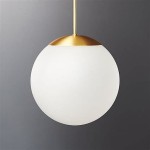Illuminating Your Outdoors: A Guide to Solar Powered Fairy Lights
Solar powered fairy lights offer a sustainable and aesthetically pleasing solution for outdoor illumination. These lights harness the sun's energy, converting it into electricity to power small LED bulbs, creating a decorative and energy-efficient lighting option for gardens, patios, balconies, and other outdoor spaces. Their popularity stems from their ease of installation, low maintenance requirements, and environmental friendliness.
Unlike traditional electric fairy lights that require a connection to the mains power supply, solar fairy lights operate independently, relying solely on solar energy. This eliminates the need for external wiring, making them a versatile choice for areas where access to electricity is limited or non-existent. The cost savings associated with reduced electricity consumption further enhance their appeal.
Understanding the Components of Solar Powered Fairy Lights
Solar powered fairy lights consist of several key components working in unison to provide light. A foundational understanding of these components is essential for selecting the right product and ensuring its optimal performance.
The most critical component is the
solar panel
. This panel is composed of photovoltaic cells that convert sunlight into direct current (DC) electricity. The size and efficiency of the solar panel directly influence the amount of energy captured and, consequently, the brightness and duration of the lights. Larger panels generally capture more sunlight and provide longer illumination times. The material used in the solar panel also affects its efficiency. Monocrystalline panels are typically more efficient than polycrystalline panels, but they also tend to be more expensive. Amorphous silicon panels are the least efficient but are also the most cost-effective.The
rechargeable battery
stores the electrical energy generated by the solar panel. This stored energy is then used to power the LED lights when sunlight is unavailable, such as during the night or on cloudy days. The battery's capacity, measured in milliampere-hours (mAh), determines how long the lights can stay illuminated. Higher mAh ratings indicate longer runtimes. Commonly used battery types include Nickel-Metal Hydride (NiMH) and Lithium-ion. Lithium-ion batteries generally offer better performance and a longer lifespan than NiMH batteries, but they are also more expensive. The battery chemistry also impacts the battery's tolerance to temperature extremes and its overall lifespan.The
LED lights
are the light-emitting diodes that produce the illumination. LEDs are highly energy-efficient and have a long lifespan, making them ideal for solar powered applications. The brightness of the LEDs is measured in lumens. Higher lumen values indicate brighter lights. The color temperature of the LEDs, measured in Kelvin (K), determines the color of the light emitted. Lower Kelvin values (e.g., 2700K) produce a warm, yellow light, while higher Kelvin values (e.g., 6000K) produce a cool, white light. The spacing between the LEDs also affects the overall appearance of the lights.The
control circuit
manages the charging and discharging of the battery and controls the operation of the LED lights. It typically includes features such as automatic on/off switching (turning the lights on at dusk and off at dawn) and dimming or flashing modes. The control circuit also protects the battery from overcharging and over-discharging, which can damage the battery and shorten its lifespan.Finally, the
wiring and casing
provide the physical structure and protection for the internal components. The wiring must be durable and weather-resistant to withstand outdoor conditions. The casing protects the solar panel, battery, and control circuit from the elements. Look for casings made from durable materials such as plastic or metal with a waterproof or water-resistant rating.Factors to Consider When Choosing Solar Powered Fairy Lights
Selecting the appropriate solar powered fairy lights for a specific outdoor space involves considering several crucial factors. This ensures optimal performance, longevity, and aesthetic appeal.
Brightness and Length:
Determining the desired level of brightness is essential. Consider the size of the area to be illuminated and the intended purpose of the lights. For ambient lighting, lower lumen LEDs may suffice, while brighter LEDs are necessary for more functional lighting. Similarly, the length of the string lights should correspond to the area to be decorated. Measure the space accurately before purchasing the lights to ensure adequate coverage. A longer length might involve splicing multiple strings together, potentially impacting performance, while a shorter length might leave the area inadequately lit.Weather Resistance:
Because these lights are intended for outdoor use, they must be designed to withstand various weather conditions. Look for lights with an Ingress Protection (IP) rating indicating their resistance to water and dust. An IP rating consists of two digits: the first digit indicates protection against solid objects (dust), and the second digit indicates protection against liquids (water). A higher IP rating indicates better protection. For example, IP65-rated lights are dust-tight and protected against water jets from any direction, while IP44-rated lights are protected against splashing water. Choosing lights with an appropriate IP rating ensures their durability and longevity, preventing damage from rain, snow, or dust.Battery Capacity and Charging Time:
The battery capacity directly affects how long the lights will stay illuminated. Consider the typical duration of darkness in the location where the lights will be used. A higher mAh rating translates to longer runtimes. Equally important is the charging time. The solar panel should be able to adequately charge the battery within a reasonable timeframe, even on partly cloudy days. Look for lights with efficient solar panels and batteries that can charge quickly and provide sufficient illumination throughout the night. The angle and position of the solar panel significantly affect the charging efficiency; ensure it’s placed in a location receiving direct and maximum sunlight.Light Color and Modes:
The color temperature of the LED lights affects the ambiance created. Warm white light (around 2700K) creates a cozy and inviting atmosphere, while cool white light (around 6000K) provides a more modern and crisp appearance. Some solar fairy lights offer multiple lighting modes, such as steady-on, flashing, and fading. Consider the desired effect and choose lights with modes that suit the occasion. The ability to adjust the brightness can also be a valuable feature, allowing for customization of the lighting according to the needs of the specific setting.Material and Durability:
The materials used in the construction of the lights significantly impact their durability and lifespan. Opt for lights with durable wiring, sturdy casings, and high-quality LEDs. The wiring should be resistant to corrosion and UV degradation. The casing should be able to withstand impacts and temperature fluctuations. High-quality LEDs will last longer and maintain their brightness over time. Choosing durable materials ensures that the lights will withstand the rigors of outdoor use and provide years of reliable performance. The method used to affix the LEDs to the string is also important, as securely attached LEDs will be less likely to detach over time.Maximizing the Performance and Longevity of Solar Powered Fairy Lights
Proper installation and maintenance are crucial for maximizing the performance and extending the lifespan of solar powered fairy lights. Simple practices can significantly improve their efficiency and ensure years of trouble-free operation.
Optimal Placement of the Solar Panel:
The placement of the solar panel is paramount for efficient charging. Ensure that the panel is positioned in a location that receives direct sunlight for at least six to eight hours per day. Avoid placing the panel in shaded areas or under trees, as this will significantly reduce the amount of sunlight it receives and, consequently, the battery's charging capacity. The angle of the panel should also be optimized to capture the maximum amount of sunlight. Adjust the angle according to the season to account for changes in the sun's position. Cleaning the solar panel regularly with a soft cloth to remove dust and debris will also improve its efficiency.Regular Cleaning and Maintenance:
Keeping the lights clean and free from debris is essential for maintaining their brightness and preventing damage. Dust, dirt, and cobwebs can accumulate on the LED bulbs and solar panel, reducing their efficiency. Clean the lights regularly with a soft cloth or brush to remove any buildup. Check the wiring for any signs of damage or corrosion and repair or replace damaged wires promptly. Inspect the battery compartment for any signs of moisture or corrosion and clean it as needed. Periodically checking the lights and performing minor maintenance tasks will help prolong their lifespan and ensure optimal performance.Proper Storage During Off-Season:
When not in use, store the lights in a cool, dry place. Before storing the lights, fully charge the battery. Disconnecting the battery from the solar panel can help prevent it from draining during storage. Avoid storing the lights in extreme temperatures, as this can damage the battery and the LED bulbs. Storing the lights properly during the off-season will help prevent damage and ensure that they are ready to use when needed.Battery Replacement:
The rechargeable battery is a consumable component and will eventually need to be replaced. When the lights no longer hold a charge or their brightness diminishes significantly, it is time to replace the battery. Use a compatible battery type and voltage. Refer to the manufacturer's instructions for battery replacement procedures. Properly disposing of the old battery is important. Follow local regulations for battery recycling or disposal. Replacing the battery can significantly extend the lifespan of the solar powered fairy lights and restore their optimal performance.Protection from Extreme Weather:
Although solar powered fairy lights are designed for outdoor use, prolonged exposure to extreme weather conditions can damage them. During severe storms or heavy snow, it is advisable to temporarily remove the lights or protect them from the elements. This will help prevent damage from strong winds, hail, or heavy snow loads. Consider using a waterproof cover or storing the lights indoors during particularly harsh weather conditions. Taking these precautions can help extend their lifespan and ensure continued performance.
Led Solar Powered Ivy Fairy String Lights Garden Outdoor Leave Wall Fence Light

Solar Outdoor Fairy Lights Warm White 150 Led 16 5m Pixie Hoselink

Outdoor Starry Solar String Lights Powered Warm White Fairy 100 Led With 8 Lighting Modes For Patio Backyard Events By Pure Garden Com

Solar Garden Lights

Outdoor Garden Decorative Lights

Why Everyone Needs Solar Garden Fairy Lights Family Handyman

Solar String Lights Outdoor 33ft 100 Led Powered Fairy Waterproof Decorative Lighting For Patio Garden Yard Party Wedding Warm White Com

Solar Powered Led Fairy Lights With Copper Wire 32ft Super Bright Leds

Solar Fairy Lights Waterproof Outdoor Firework Leds Garden Flower Light For Party Diy Decoration Decorations Colorful Temu

Vookry 240 Leds Solar Fairy Lights Outdoor Waterproof Bunch Watering Can Light No Powered Firefly Moon Plants Tree Vines Decorations Com
Related Posts







